Did you know that Cabo San Lucas processes over 80 tons of fresh seafood daily, with nearly 90% sourced from within 50 miles of Baja’s vibrant coasts? This stunning fact isn’t just about numbers: It’s a window into a thriving Baja seafood scene, where ocean bounty meets tradition, freshness, and incredible flavors. Whether you’re a traveler chasing your next great day of coastal eats, a food lover seeking authentic Baja Sur taste, or a first-timer eager to navigate the bustling markets of Cabo San Lucas and Los Cabos, this listicle delivers everything you need to dive into seafood in Cabo—with expert tips, exclusive local insights, and the region’s most can’t-miss bites. Read on to unlock the real treasures of the Sea of Cortez—fresh and served with Cabo’s soul.
What You’ll Learn About Seafood in Cabo
- The essential seafood experiences unique to Cabo San Lucas and Los Cabos
- How to navigate the best of Baja seafood
- What to seek for local freshness
- Expert insights and local fishing report highlights
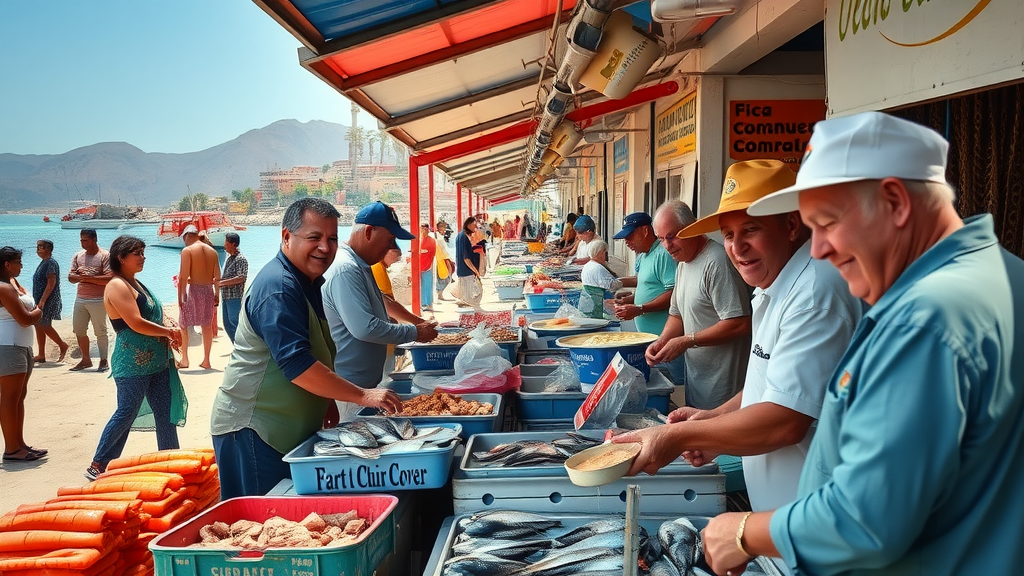
A Surprising Statistic: Why Seafood in Cabo Reigns Supreme
Cabo San Lucas processes over 80 tons of fresh seafood daily, with nearly 90% sourced from within 50 miles of Baja’s coasts — cementing its place as a global seafood hub.
The sheer scale and freshness of seafood in Cabo distinguish it from nearly every other coastal food scene. With the Sea of Cortez and mighty Pacific as daily suppliers, Cabo’s bounty is delivered by local fishermen who come in at sunrise with boats full of live bait, yellowfin tuna, red snapper, and so much more. This relentless freshness, highlighted in every recent fishing report, means whether you’re biting into grilled octopus at a San Lucas stall or savoring sashimi-grade Baja tuna at a beachside table, you’re tasting the essence of the day’s catch. No wonder seafood lovers call Cabo San Lucas the “crown jewel” of los cabo seafood.
The Ultimate List: 12 Must-Try Types of Fresh Seafood in Cabo
1. Baja Lobster: Cabo’s Decadent Delight
Baja lobster, known locally as “langosta,” is a succulent, sweet staple of the Cabo San Lucas coast. Noted for its tender texture and uniquely sweet flesh, this lobster is grilled or poached and often served with drawn butter or spicy salsa. Locals recommend enjoying Baja lobster grilled over mesquite with a side of East Cape citrus—a combo that intensifies the flavor. From upscale marinas to humble fish shacks in San José, this decadent delight offers a bite of Baja’s finest, directly connecting you to the sea of cortez tradition with each forkful. For those wanting true regional flavor, savor it “al mojo de ajo,” swimming in sizzling garlic butter.
2. Fresh Yellowtail Snapper from Los Cabos
Yellowtail snapper—caught in the crystalline waters off Los Cabos—is celebrated for its flaky texture and subtly sweet taste. Skilled fishermen bring in caught fish fresh and it quickly turns up at local markets or featured on the day’s menu at San Lucas street vendors. Most often grilled whole with a sprinkle of sea salt and local herbs, yellowtail snapper shines in traditional Baja seafood stews or atop tostadas garnished with crisp cabbage and lime. Check the latest fishing reports for peak season tips; the best flavor is found during spring and autumn when snapper schools are most plentiful off the East Cape.
3. Pacific Shrimp: San José’s Sought-After Catch
Pacific shrimp, or “camarón,” is a favorite live bait-turned-delicacy, prized by seafood lovers for its plump, juicy bite and slight sweetness. In San José del Cabo, you’ll find shrimp in ceviche, tacos, and legendary garlic-chili sautés. This local treat is best enjoyed when the catch is fresh from the dock and the shells still snap—look for clear, translucent bodies and a clean, briny scent at the market. For an authentic baja sur experience, try these shrimp flame-grilled on the beach while watching pelicans and sea lions at work just offshore—a taste of daily life along the coast.
4. Baja Oysters: Taste of the East Cape
Baja oysters, grown in the pristine waters of the East Cape, offer a briny, mineral-rich flavor that has made them a rising star in los cabos culinary circles. These oysters are harvested by hand, shucked to order, and best eaten raw with just a spritz of lime. If you’re venturing to a local seafood vendor, always ask if their oysters are from the day’s batch—they should gleam with moisture and sit tightly in their shells. Pair with a splash of salsa negra for a perfect marriage of brine and spice, or hunt them down at Cabo’s food scene festivals where oyster shooters are legendary.
5. San Lucas-Style Grilled Octopus
San Lucas grilled octopus sets itself apart with a unique, smoky tenderness. The tentacles are marinated in chile-lime, then charred over open flame until the outside has a slight crunch while the inside remains luxuriously tender. Locals favor octopus in tacos or straight off the grill atop a salad of garden-fresh tomatoes and Baja citrus. For the true flavor profile, drizzle with olive oil and eat with a slice of warm, fresh bread—an iconic bite straight from the San Lucas market vendors. Check regional fishing reports to learn when octopus is most abundant, or simply follow your nose in the marina at sunset.
6. Marlin Tacos: Cabo San’s Iconic Street Food
Marlin tacos are a staple of the cabo san street food scene—smoked marlin, flaked and tossed with tomato, onions, and peppers, then served in a warm corn tortilla. Known for their savory, slightly smoky flavor, marlin tacos are perfect with a dollop of spicy Baja crema and fresh cabbage slaw. You’ll find the best versions made to order at bustling San Lucas food stalls, where lines of locals attest to their must-try status. Whether after a long day fishing or as a quick market snack, these tacos deliver a taste as authentic as Cabo itself, especially when shared with friends overlooking the boats at dusk.
7. Los Cabos Stone Crab
The rugged rocky shallows of los cabos are home to sweet, meaty stone crab—one of the region’s most prized catches. Cracked open tableside and served chilled with tangy Baja mustard sauce, this local favorite offers a firm, satisfying bite. Many fishing reports highlight stone crab’s harvest season in late spring, making this a limited-time treat at San Lucas seafood markets and upscale restaurants alike. If you see them on the day’s catch board, don’t hesitate—savor every morsel with a crisp local cerveza.
8. Mahi Mahi (Dorado) Ceviche
Mahi mahi, or dorado, is loved for its delicate, firm flesh and is most often enjoyed in a zesty ceviche. Chopped and marinated in lime with onions, tomatoes, and fresh cilantro, this ceviche bursts with the flavors of the coast. On the East Cape, beach shacks serve airy dorado ceviche tostadas while pelicans vie for scraps—a true baja seafood moment. Try it paired with slices of avocado and a drizzle of hot sauce, or visit local markets for the freshest raw fillets to take home and prepare yourself.
9. Scallops from Del Cabo Waters
The del cabo region is famous for its tender, sweet scallops, which are frequently pan-seared to golden perfection, then topped with local citrus and sea salt. Whether added to a rich seafood risotto or grilled to caramelized edges, del cabo scallops are a delicacy with a loyal following. For a real taste of luxury, sample them at sunset with a glass of regional white wine—many chefs consider these scallops the “hidden gem” of Los Cabos cuisine. Always check they’re labeled from the day’s catch for peak freshness.
10. Grouper Fillet in Traditional Preparations
Grouper is a top-tier target on any fishing trip for its meaty texture and mild flavor. In Cabo San Lucas and los cabos, grouper is commonly filleted and cooked either grilled or zarandeado-style—marinated with local chiles and wood-fired for a rich, smoky finish. Grouper’s versatility shines in stews, tacos, and ceviche, and it pairs well with robust salsas and tortillas. Many local fishing reports detail grouper runs in late summer, so plan your visit accordingly to taste this classic at its freshest.
11. Swordfish Steaks: San Lucas’ Signature Cut
San Lucas swordfish—often called “pez espada”—offers thick, juicy steaks ideal for grilling. The steaks have a bold flavor and a firm texture, loved by chefs for their ability to hold up to bold seasonings. Locals recommend swordfish with a Baja-style chili rub, grilled over mesquite and served with roasted vegetables. Check the menu boards on the marina for swordfish specials, as this prized catch is often offered for just a few weeks following peak season. It’s the perfect main for a great day of family feasting.
12. Red Snapper: Baja’s Vibrant Coastal Classic
Red snapper—known regionally as “huachinango”—is a beloved Baja seafood classic, praised for its fine texture and sweet, pink flesh. It is most often served whole, grilled and sauced “a la talla” (with chile paste), or pan-fried and topped with garlic and cilantro. Red snapper’s year-round presence makes it a local mainstay at markets from San José to Los Barriles, though fishing reports recommend autumn for the most bountiful haul. Don’t miss the chance to sample it at a bustling seafood stall in the heart of Los Cabos, where each bite connects you to generations of coastal tradition.
- Best flavor pairings: citrus, chiles, avocado
- Preferred textures: tender lobster, flaky snapper, firm swordfish, juicy shrimp
- Regional styles: grilled, ceviche, zarandeado, poached, and pan-seared
- Fishing report tips: check by season for stone crab and grouper specials
How To Choose the Best Seafood in Cabo San Lucas and Los Cabos Markets
Sourcing Freshness: What Locals Look For
Freshness is the heart of seafood in Cabo. Locals and seasoned chefs rely on their senses and a few key indicators to assess quality. Look for fish with clear, bright eyes, firm and shiny flesh, and a clean, briny scent—signs that the catch is from today and not yesterday’s haul. Shellfish like oysters and stone crab should appear moist and tightly closed; any indication of dryness or off-odor is a red flag. In Los Cabos fish markets, sellers are often happy to show off the day’s best, offering tastes or small samples. Experienced shoppers also check the color of gills (they should be deep red), and ensure shrimp and scallops have a natural sheen, indicating minimal processing and peak condition straight from the sea of cortez.
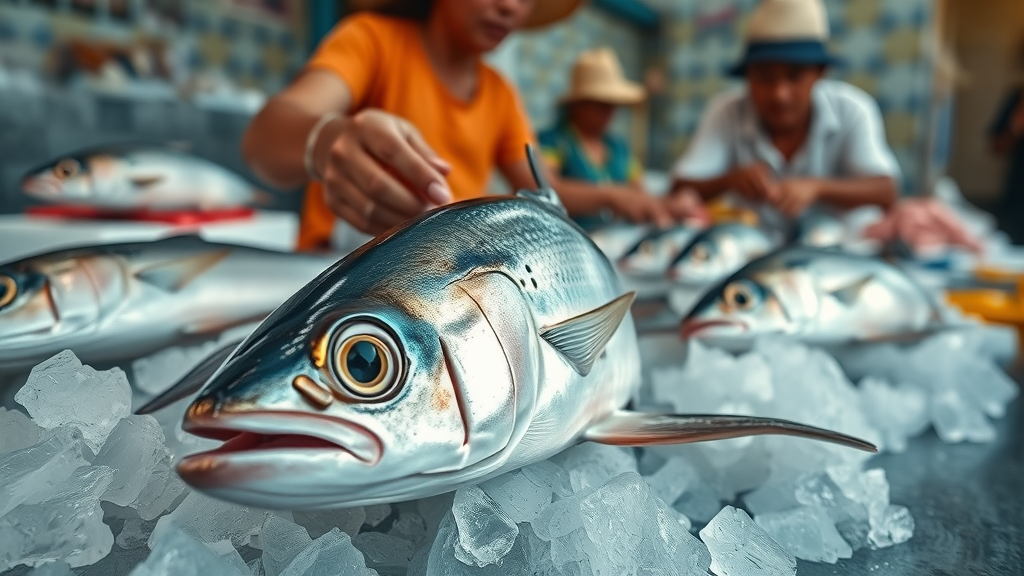
Key Pointers from Local Fishing Reports
Staying tuned to the latest local fishing reports pays dividends for those seeking the freshest Baja seafood. Fishing reports detail which species are in peak season, what weather or tidal conditions are driving big catches, and where certain delicacies—like striped marlin or big roosterfish—are most likely to appear. Locals also use these reports to avoid overfished species and identify when niche items like East Cape oysters or Los Cabos stone crab are at their prime. If you want the inside track, chat with market vendors about recent catches or check local fishing report boards posted at the docks for updates on yellowfin tuna, grouper, and more.
Tips for Navigating Los Cabos Fish Markets
Cabo’s bustling fish markets can be overwhelming at first glance, but armed with local advice, you’ll find the process thrilling and rewarding. Arrive early for the best selection of live bait and just-caught fish. Remember, freshness is king and seasonality guides what’s available each week—refer to the fishing report for what’s in peak. Practice local etiquette by greeting vendors, asking questions, and haggling with respect. In San Lucas, San José, and the East Cape, several markets are famed for their honest vendors and diverse offerings; ask for recommendations and follow the crowds for authentic local buys. If you’re new, bring a cooler and ice to preserve your catch if you plan on taking seafood for home cooking or a day fishing adventure.
- Spotting truly fresh seafood is all about scent, color, and resistance to touch
- Know what’s in season: marlin in summer, oysters in winter, crab in spring
- Be polite and patient—market etiquette goes a long way, especially during busy periods
- Top market picks: San Lucas Main Dock Market, San José Mercado de Mariscos, East Cape roadside vendors near the beach
Baja Seafood: Cooking Tips and Simple Home Preparations
Best Ways to Cook Lobster, Shrimp, and Oysters from Los Cabo
Perfectly preparing seafood in Cabo starts with honoring simple, local methods. Baja lobster is best split and grilled over mesquite, finished with butter, garlic, and a sprinkle of fresh cilantro—let the natural sweetness shine through. For Pacific shrimp, try a quick pan-sear in olive oil with sliced chiles or whip up a classic ceviche with lime, cilantro, and diced tomato. East Cape oysters are best enjoyed raw with a touch of lime or, for a cooked treat, lightly grilled until the shells just open, topped with a hint of salsa verde. Using straightforward recipes lets the inherent quality of Los Cabos seafood sparkle at home.
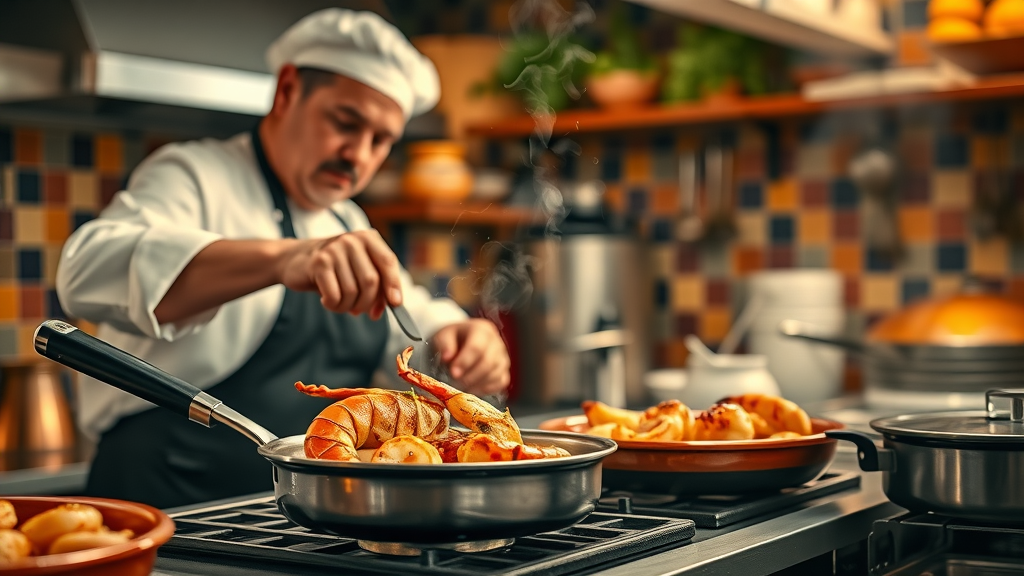
Safe Preparation Practices for San Lucas Fish
Fresh seafood safety is vital in Cabo’s home kitchens. Always keep seafood well-chilled on ice or in a refrigerator until just before cooking. For ceviche, only use the freshest fish and marinate in citrus for at least 20 minutes to reduce risk. When grilling or pan-searing, ensure fish reaches an internal temperature of 145°F. Discard any shellfish that remain closed after cooking, and always wash surfaces and hands thoroughly to avoid cross-contamination. Using regional flavor profiles, such as Baja-style marinade blends with chiles, herbs, and lime, can elevate even simple preparations while ensuring safe and memorable meals.
- Recommended cooking methods: grilled (lobster, snapper), poached (shrimp), ceviche (mahi mahi, grouper), steamed (scallops), fried (calamari, octopus)
- Explore regional recipes and variations—many local markets offer demo classes or prepared meal kits
- Pair seafood with Baja’s crisp local beers and citrus-forward cocktails for a true coastal food scene experience
Seafood in Cabo by Season: A Month-by-Month Fishing Report Guide
Peak Seasons for Marlin, Tuna, and Grouper in Los Cabos
Knowing the seasonal rhythms of seafood in Cabo helps you savor each catch at its absolute best. Marlin and yellowfin tuna thrive during the warm summer months, especially July through October, when big tournaments and day fishing trips fill the marinas of Cabo San Lucas. Grouper, a local favorite for its hearty flesh, is typically at its peak from late spring into summer, with fishing reports praising the bumper hauls from the los barriles and East Cape area. Plan your visit during these windows to taste the real vibrancy of Baja seafood fresh off the boat, from grilled swordfish steaks to zesty tuna ceviche.
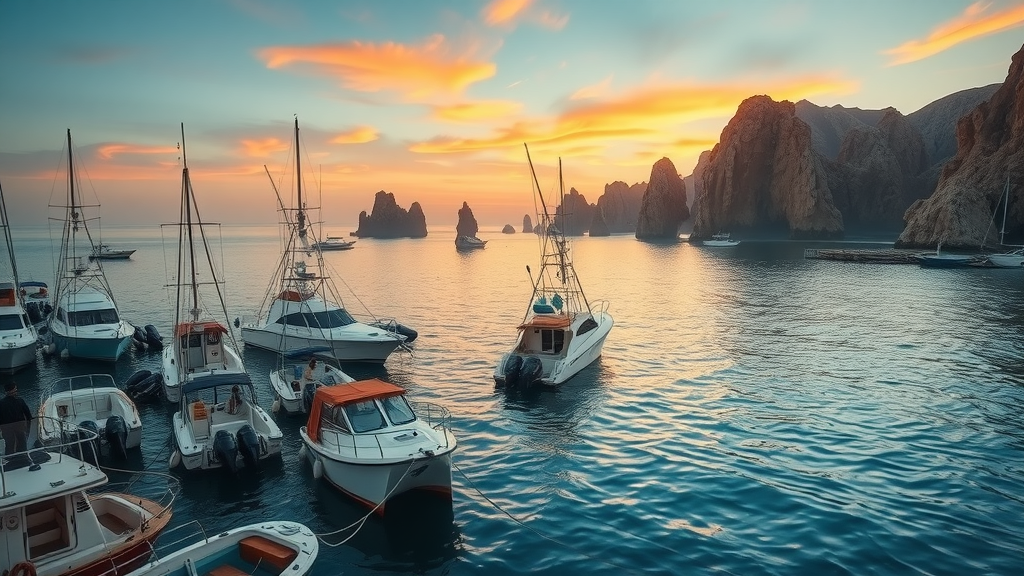
Lesser-Known Harvest Seasons for Oysters and Crab
Baja’s seafood bounty doesn’t pause with the warm-weather classics. Oysters are at their plumpest and sweetest from November through February, while stone crab harvest runs from spring through early summer, often highlighted at local food festivals. Delving into fishing reports around these months will clue you in to where to find the freshest shellfish or join in seaside celebrations. Many San José del Cabo restaurants and coastal towns unveil monthly seafood specials—ask about “seasonal plates” for the chef’s latest picks inspired by the tides.
- Seasonal seafood calendar: Marlin (Jul-Oct), Tuna (Aug-Nov), Grouper (May-Aug), Oysters (Nov-Feb), Stone Crab (Apr-Jun), Red Snapper (Sept-Nov)
- Local festival highlights: San Lucas Seafood Festival (October), Oyster Fair (December in East Cape), Marlin Tournament (August)
- Monthly restaurant specials—check with markets for the freshest daily options
| Month | Seafood |
|---|---|
| January - February | Oysters, Pacific Shrimp, Grouper |
| March - April | Stone Crab, Scallops, Grouper |
| May - June | Stone Crab, Mahi Mahi, Red Snapper |
| July - August | Marlin, Yellowfin Tuna, Grouper |
| September - October | Red Snapper, Marlin, Tuna |
| November - December | Oysters, Lobster, Pacific Shrimp |
Can’t-Miss Seafood Dishes Unique to Cabo San Lucas and San José
Tacos de Pescado (Fish Tacos) in Cabo San
Fish tacos are the undisputed kings of the Cabo san street food scene. Crisp, golden fish fillets—usually snapper or grouper—are nestled in warm corn tortillas, topped generously with fresh cabbage, creamy sauce, and punchy salsa. Vendors in downtown San Lucas and San José line up crowds for their unique takes, often using the best catch of the day. For true local flavor, try tacos at morning markets or during bustling food fests where chefs compete to put their own spin on this iconic Baja staple.
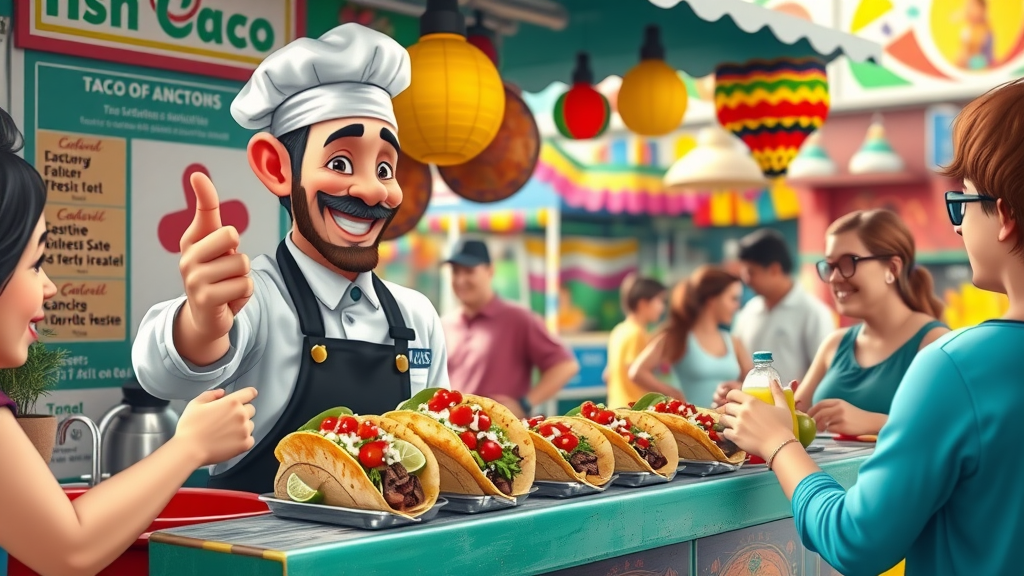
Zarandeado Style Grilled Fish
For a taste that screams los cabos, grilled fish “zarandeado” style is a must. This technique starts with a whole fish (often snapper or grouper), butterflied and marinated in chile adobo, then charcoal-grilled for smoky, spicy depth. The result is tender, melt-in-your-mouth flesh laced with crisp skin and a subtle heat, best shared family-style. You’ll see this preparation at beachside shacks in the East Cape and in markets across Cabo san lucas—just follow the aroma of mesquite and sizzling fish. Zarandeado is a window into regional history, with recipes handed down across generations.
Sashimi-Grade Baja Tuna
Did you know that tuna thriving off the Sea of Cortez rivals any sashimi-grade catch in the world? Los Cabos markets feature thick, ruby slices of raw yellowfin tuna served with soy, wasabi, and a touch of Baja lime. Many high-end restaurants in San Lucas and San José build entire menus around fresh, local tuna, often caught just hours before your meal. Eco-conscious diners will appreciate that local catch methods keep sustainability at the forefront, as detailed in every reputable fishing report. Ask chefs for the “catch of the morning” to secure the very best.
- Preparation secrets: Always slice sashimi-tuna against the grain and serve chilled; for fish tacos, use crispy tempura batter for extra crunch
- Restaurants to try: Taquería Rossy (San José), Los Claros (San Lucas), Mariscos Mazatlán (East Cape)
- Dish history: Fish tacos trace to Ensenada, but zarandeado is a Los Cabos invention; sashimi-grade tuna inspired by Japanese influence on Baja food scene
Expert Quotes: Cabo Chefs and Local Fishermen on Seafood in Cabo
"Baja seafood isn’t just a product – it’s a way of life." — Chef Ricardo Morales, Los Cabos
"Our daily catch in San Lucas shows just how much the Pacific gives back." — Fisherman Esteban, Cabo San Lucas
People Also Ask: Your Seafood in Cabo Questions, Answered
[[paa]]
-
Which is the best time to visit for top seafood in Cabo San Lucas?
The best time for seafood in Cabo is from July through October, when marlin, tuna, and red snapper are in peak season according to local fishing reports. You’ll enjoy the freshest catches, vibrant food festivals, and signature dishes made with just-caught fish. If you love oysters or stone crab, winter and spring herald their arrival—they’re often celebrated in local food festivals across los cabo. -
Can visitors buy fresh seafood at Los Cabos markets for home cooking?
Absolutely. Both Cabo San Lucas and San José del Cabo have bustling seafood markets that welcome travelers seeking to bring home fresh Baja seafood. Arrive early, greet vendors respectfully, and consider bringing your own cooler to keep your haul icy-fresh for the kitchen or a day fishing. Market staff will often provide preparation or recipe advice as well! -
How to identify truly fresh Baja seafood?
Look for crystal-clear eyes, red gills, lustrous and tight flesh, and a briny, clean aroma in fish. Shellfish should be tightly closed, moist, and heavy. Local vendors in the sea of cortez region are known for being upfront about what’s caught fresh that morning—don’t hesitate to ask or request to smell the catch before buying. -
What is the most iconic seafood meal in San Lucas?
A grilled whole snapper "a la talla" or street-side marlin tacos are arguably the two most iconic seafood meals in Cabo San Lucas. Both spotlight the local talent for preparing seafood in Cabo with big flavors and simple, fresh ingredients, best enjoyed at a bustling dockside eatery.
Top Local Seafood Markets and Street Vendors for Baja Seafood in Cabo
- San Lucas Main Dock Market: Top pick for live bait, red snapper, and scallops—arrive at sunrise for best selection. Located near the marina after the fish auctions.
- San José Mercado de Mariscos: Known for oysters, lobster, and friendly vendors who give cooking tips.
- East Cape Roadside Stalls: Great for picking up oysters, stone crab, and seasonal shellfish; vendors will clean and pack catches for travel.
- Food Trucks and Pop-Ups: Check near the Cabo San Lucas marina or at weekend events for specialty Baja seafood tacos and ceviche—follow local social media for the latest spots.
- Insider tips: Always inspect your catch, ask about the fishing report, and request “caught today” for maximum flavor.
How Sustainable Is Seafood in Cabo? Local Practices, Regulations, and What You Should Know
Ethical Sourcing in Los Cabos
Sustainability is a growing priority in the seafood in Cabo community. Many vendors and top restaurants now only source from regulated day fishing trips, with limits on catch size and species. Eco-friendly initiatives include live bait-only fishing, size minimums for shellfish, and catch-and-release for vulnerable species like big roosterfish and marlin. Always check for certifications or “Pesca Responsable” signage at markets and ask vendors about their sustainability practices—most are proud to share and happy to help conscientious visitors make eco-friendly choices.
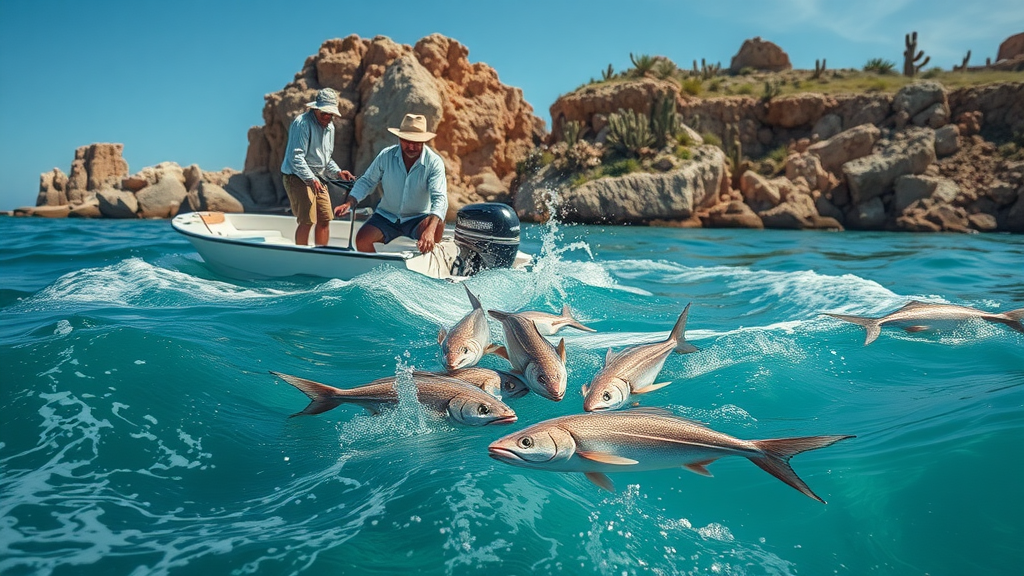
Conservation Initiatives from Local Fishing Report Data
Recent fishing reports highlight an array of conservation measures adopted across the Baja sur region. Local agencies, often in partnership with eco-tour operators, monitor seasonal quotas and safeguard fragile reefs and spawning areas. Sustainable restaurants in Los Cabos display catch certifications and promote underutilized species to prevent overfishing. Visitors can support conservation by choosing menu items marked sustainable, avoiding banned or at-risk species, and spreading the word about responsible seafood in Cabo practices. The ongoing push towards a more eco-conscious food scene is turning Los Cabos into a benchmark for global coastal cuisine sustainability.
- Order responsibly: ask for daily specials that highlight sustainable catches
- Eco-tourism is growing—support places offering responsible fishing trips and conservation tours
- Notable certifications: “Pesca Responsable,” MSC (Marine Stewardship Council), and local community-run labels
Behind the Scenes at Los Cabo Fish Markets
Want to experience the journey from sea to table? Dynamic footage in our featured video tracks dawn-to-dusk action at Los Cabos markets—boats landing at sunrise, bustling buyers choosing the day’s catches, and masterful vendors cleaning and filleting everything from tuna to stone crab. The market’s energy is contagious and reveals the importance of seafood in Cabo’s food culture.
Cabo San Lucas Chefs Show Off Baja Seafood Skills
Step into local kitchens with chefs who transform the daily catch into signature regional dishes—grilled lobster, ceviche, zarandeado fish, and seared scallops. The blend of culinary mastery and respect for Los Cabos seafood traditions is a standout feature of every scene, from open-air taco stands to elegant marina restaurants. Watch and learn the essence of Baja seafood, where freshness meets skill every day.
Key Takeaways: What Sets Cabo’s Seafood Scene Apart
- Unmatched rapid freshness: From boat to plate within hours
- Rich biodiversity: Tuna, marlin, snapper, lobster, and more grace the tables
- Regional specialties: Grilled lobster, zarandeado snapper, marlin tacos, and ceviche
- Sustainable eco-focus: Conservation and responsible sourcing at the core of Cabo’s seafood culture
FAQs: Everything Else About Seafood in Cabo
-
Which is the best time to visit for top seafood in Cabo San Lucas?
July–October for marlin and tuna, November–February for oysters, all based on peak fishing report data. -
Can visitors buy fresh seafood at Los Cabos markets for home cooking?
Yes. Early morning shopping yields the freshest options—remember coolers and ice! -
How to identify truly fresh Baja seafood?
Look for clear eyes, red gills, moist flesh, tightly closed shells, and seek trusted local vendors. -
What is the most iconic seafood meal in San Lucas?
Whole grilled snapper or marlin tacos from a dockside stand top the list for locals and tourists alike.
Conclusion: The Last Word on Seafood in Cabo and Your Next Culinary Adventure
"To taste seafood in Cabo is to taste the true soul of Baja."—Local proverb
- Every bite highlights the region’s dedication to unmatched quality and cultural depth
- Choose your seafood by season for peak freshness and flavor
- Cabo’s food scene reflects the dynamic energy and diversity of its fishing communities—explore markets, savor specialties, and support sustainable practices for the next great day at the coast
Next Steps: Plan Your Own Seafood in Cabo Adventure
- For specials to the best restaurants in Cabo, don't forget to check with https://curatedcabomx.com
Exploring the vibrant seafood scene in Cabo San Lucas offers a culinary adventure like no other. For a comprehensive guide to the freshest catches and top dining spots, consider visiting Seafood Restaurants in Cabo San Lucas. This resource provides detailed information on various seafood establishments, helping you plan your gastronomic journey. Additionally, TripAdvisor’s Best Seafood Restaurants in Cabo San Lucas offers user reviews and ratings, giving you insights into popular dining experiences. If you’re serious about savoring the best seafood Cabo has to offer, these resources will guide you to memorable meals.
 Add Row
Add Row  Add Element
Add Element 


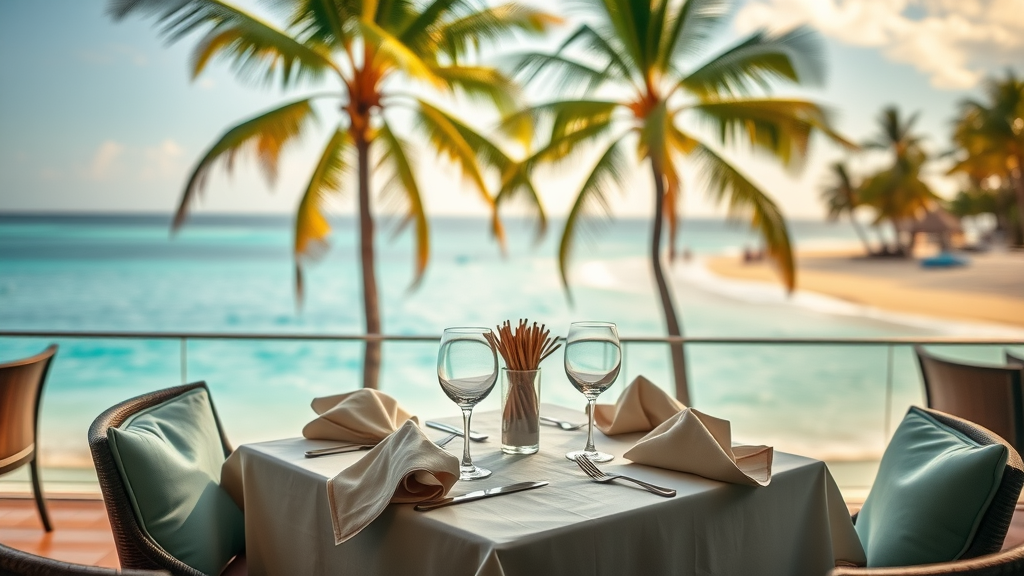
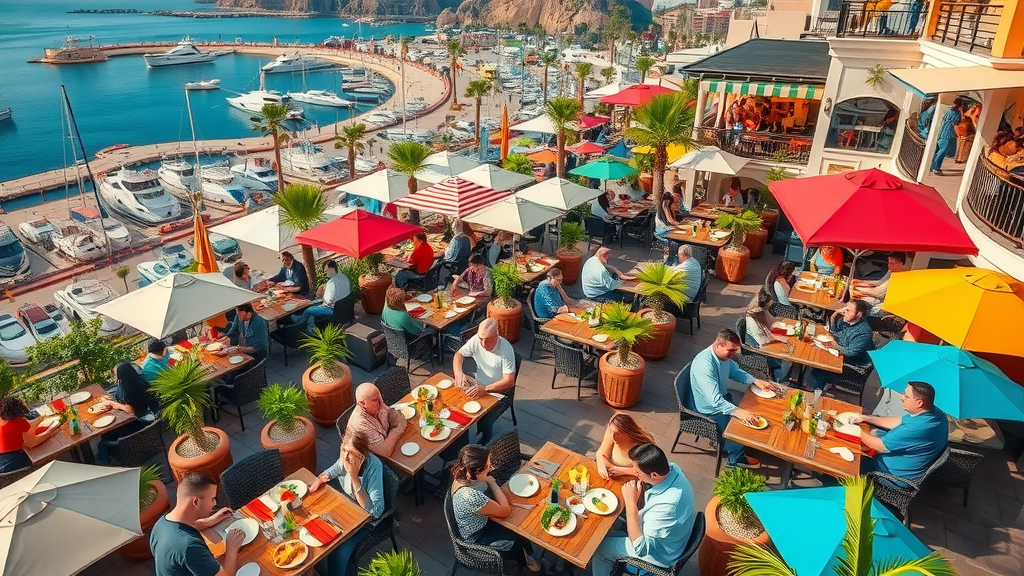
Write A Comment